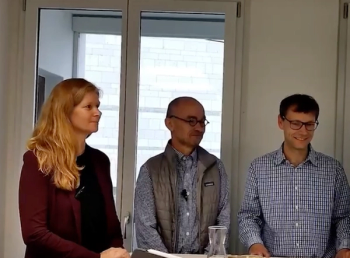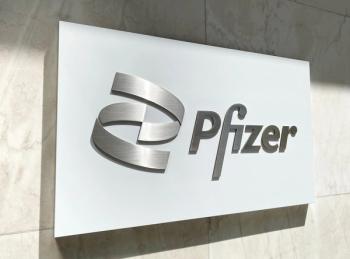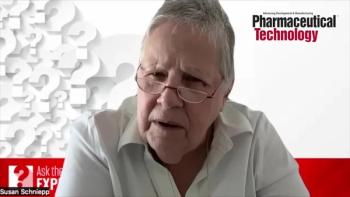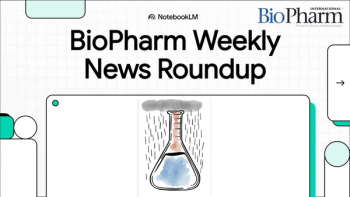
The regulatory progress for AAVantgarde’s AAVB-039 underscores advances in dual-vector gene therapy, as well as scalable manufacturing and efficient rare-disease clinical development.

The regulatory progress for AAVantgarde’s AAVB-039 underscores advances in dual-vector gene therapy, as well as scalable manufacturing and efficient rare-disease clinical development.

The study by Integra Therapeutics and partners reveals how AI-engineered proteins could expand gene-editing tools and streamline development of advanced therapies.

Pfizer re-balances weight loss portfolio with Metsera, Bristol Myers Squibb and Roche make breast cancer progress, and Keytruda gets under your skin.

This new draft guidance mandates efficient, long-term CGT postapproval monitoring using real-world evidence, registries, and decentralized models, all critical for biopharma.

On July 31, President Donald Trump said the federal government would “deploy every tool in our arsenal to protect American families from continued abusive drug pricing practices” should companies fail to comply.

This innovative trial guidance accelerates cell and gene therapy development for rare diseases, boosting biopharma efficiency and data maximization.

FDA's Center for Biologics Evaluation and Research has released updated draft recommendations for sponsors of cell therapies, gene therapies, and tissue products.

Novartis expands its immunology pipeline with the Tourmaline acquisition and tests direct-to-patient model to reshape drug manufacturing strategies.

The inaugural BioPharma By the Numbers provides a data-driven look at how automation in bioprocessing is driving efficiency, reducing errors, and addressing capacity challenges.

Formulation and analytics are combining to advance drug development synergistically, with evolving tools and related strategies shaping quality, scalability, and innovation.

This week’s roundup highlights US manufacturing localization via tariffs, Pfizer’s $4.9 billion deal, and new tech in CRISPR, RNA, and continuous processing.

The 100% tariff on imported drugs will pressure biopharma companies to build manufacturing sites in the US or face significant costs.

The new protein-based HDR enhancer aims to improve CRISPR precision for advancing cell and gene therapy development workflows.

Quantoom will leverage its proprietary LNP formulation technology, and MSK will have the option to expand the license agreement if there are future developments in Quantoom’s library.

In this episode of the Ask the Expert video series, Susan J. Schniepp, Regulatory Compliance Associates, and Siegfried Schmitt, PhD, Parexel, answer questions on the use of real-world evidence for both small-molecule and large-molecule drug development. In addition, they tackle a question on supply chain security problems that arise during transportation of pharmaceutical goods.

BIO-Europe 2025 in Vienna will gather global biopharma leaders to explore investment, manufacturing, and rare disease innovation.

RION partners with Lonza for CGMP manufacturing of PEP, advancing exosome drug development and scalable biopharma production.

The company’s mission to be “continuously innovative” has resulted in the creation of this novel acronym.

Alvin Jogasuria, ProBio; Matthew Lunning, University of Nebraska Medical Center; and Carl Schoellhammer, DeciBio, go behind the headlines to discuss the need for doing more with less.

Pfizer will expand its obesity drug pipeline with Metsera’s clinical incretin and amylin programs, highlighting advances in biopharma development and manufacturing.

Advances in digital technologies offer effective data handling for bio/pharma manufacturing.

The scaled adoption of cell and gene therapies demands a new era of agile, precise, and efficient quality control methods. Manufacturers and diagnostic partners must collaborate to create innovative, compliant testing strategies that preserve product integrity, meet tight timelines, and deliver life-saving treatments faster.

New GS knockout CHO-K1 systems accelerate biologics manufacturing by improving yields, scalability, and flexibility for biopharma development programs.

Regulatory crackdowns on risk disclosure rise, policy instability affects public health, and drug innovation focuses on advanced therapies and AI-driven discovery.

In the first-ever “Two-Minute Mysteries: BioPharma Stories,” Agilent’s Ken Boda shares the mystery of a low reading.

ACIP votes to separate MMR and varicella vaccines (MMRV) for children to cut febrile seizure rates.

CPHI Pharma Awards 2025 highlight breakthroughs in bio/pharma technology, sustainable manufacturing, and industry leadership.

Ex-CDC head Susan Monarez testifies she was fired for resisting RFK Jr.'s pressure to sideline science, raising alarms for bio/pharma's regulatory stability.

The Phase IIa trial will further explore the EP4 antagonist HTL0039732 in combination with immunotherapy to improve outcomes in resistant solid tumors and expand treatment options.

SynaptixBio CEO Dan Williams discusses how small biotechs drive rare disease innovation with genetic research, partnerships, and patient advocacy in a third interview installment.